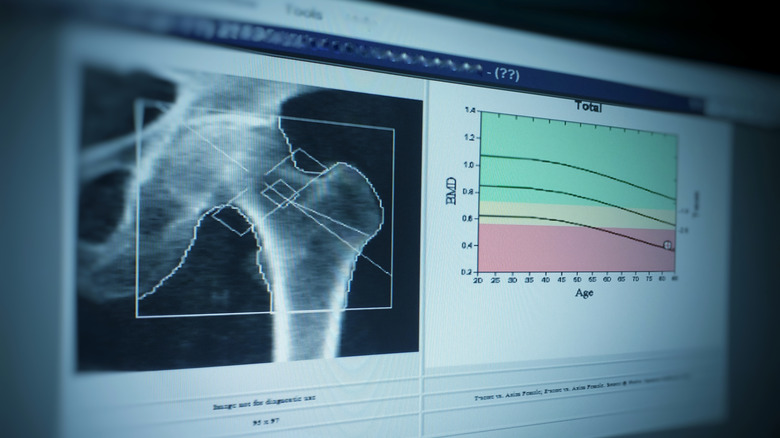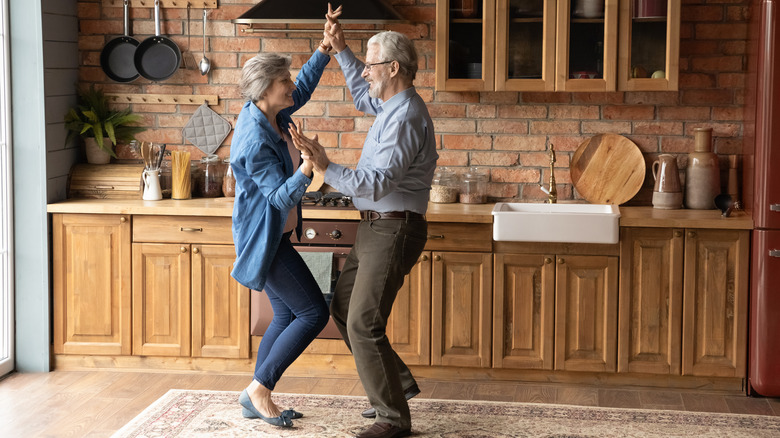This Is What You Can Do To Prevent Osteoporosis
Aging is an inevitable part of the human experience. With each passing year, our bodies change both inside and out. Hearing loss, vision changes, and stiffening joints are all associated with aging. But there is one condition that is harder to see, one that predominantly affects older women according to the Office on Women's Health, and that is osteoporosis, a bone disease where bones become weak and break easily.
The Mayo Clinic explains that our bodies constantly form new bone as it breaks down old skeletal material. When we are young, our bodies produce new bone faster than it breaks down the old. This ratio evens out somewhere around the age of 30. After that point, bone density begins to decrease as our bodies break down bone faster than it produces new material.
The process cannot be stopped, however, there are ways to prevent severe bone density loss, potentially sidestepping osteoporosis. This means that, while bone density may still be lower as a person ages, they aren't as likely to break a bone during a fall, which is the condition's most notable symptom according to the Better Health Channel.
A set of healthy habits
It is never too early to start preserving your bone density. As the Office on Women's Health states, osteoporosis prevention starts long before the condition is a concern for most people. To reduce the risk of osteoporosis, focus on habits that build strong bones early in life.
The Office suggests ensuring that your diet has enough calcium and vitamin D. Calcium is integral to the creation of strong bones, while vitamin D helps the body absorb calcium effectively (via the NIH). This could mean adding seafood and vitamin D-enriched dairy foods to your diet as well as greens like kale and broccoli, as suggested by Johns Hopkins Medicine.
In addition to dietary concerns, the Office on Women's Health suggests regular weight-bearing exercises like running or dancing to manage osteoporosis risk. As HCF of Australia explains, bone is a dynamic tissue and dancing challenges it by moving in all directions. The organization goes on to suggest other ways to increase bone density through activity, such as weight lifting, hiking, opting for the stairs, and taking regular walks.
Finally, the Office suggests cutting out nicotine and alcohol, as both can damage bone density. If a person does not want to cut out alcohol entirely, stick to moderate drinking which amounts to one drink per day for women.


